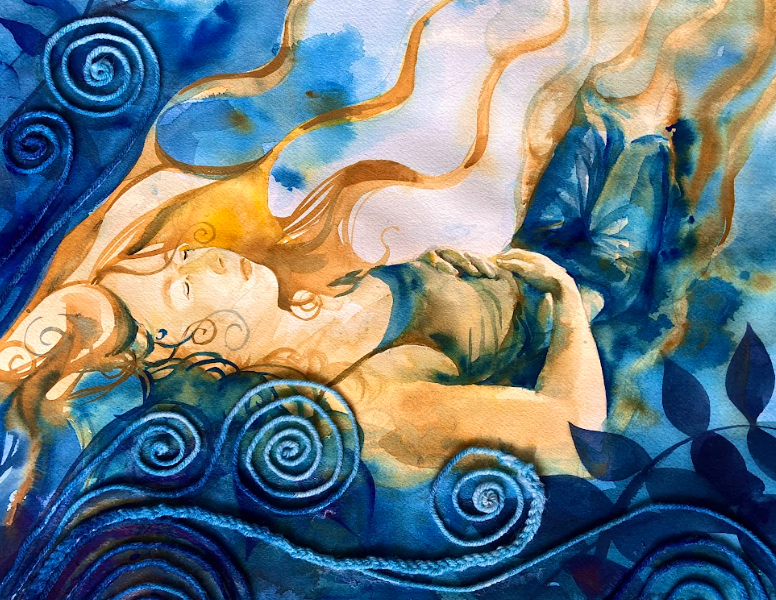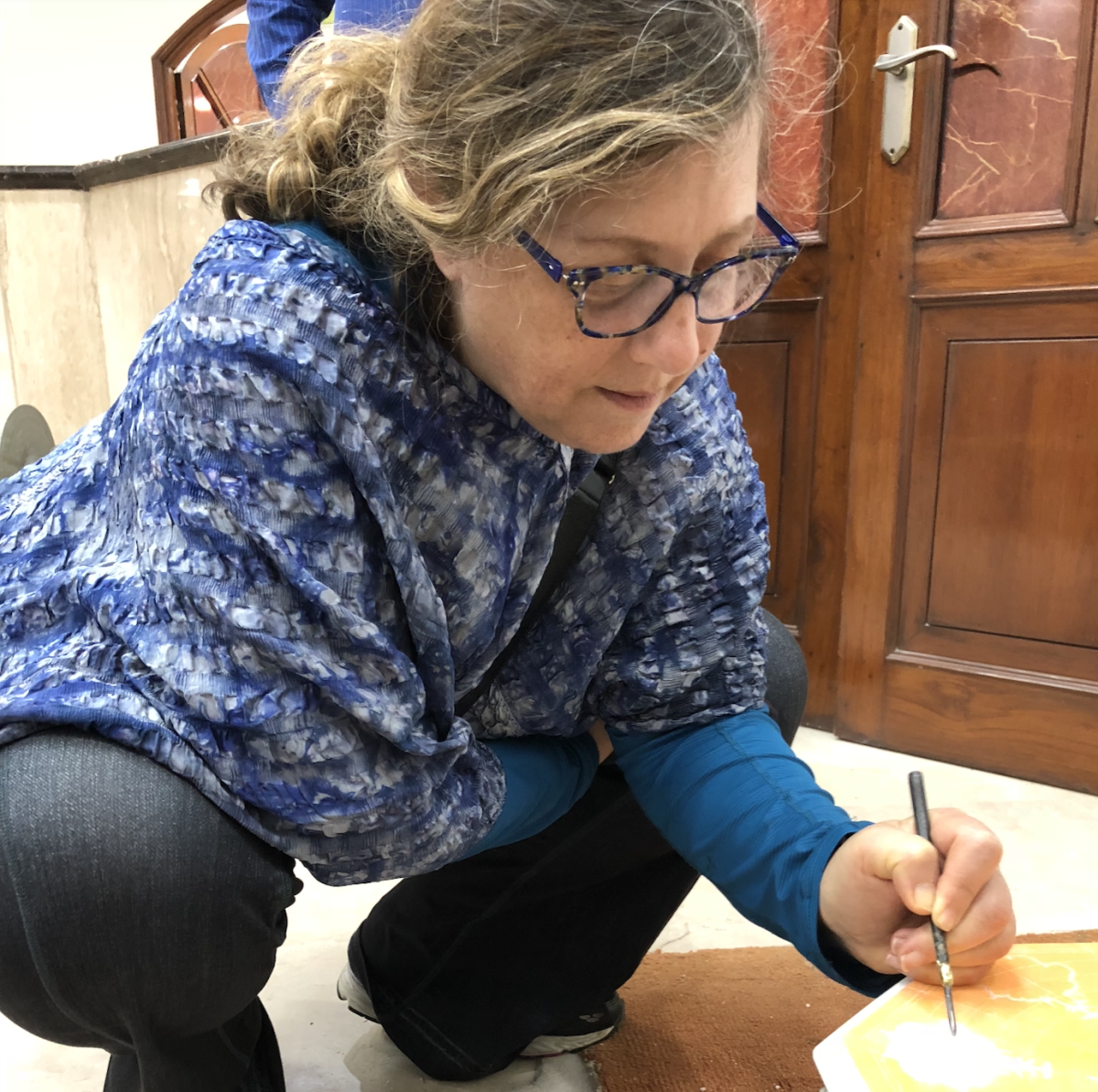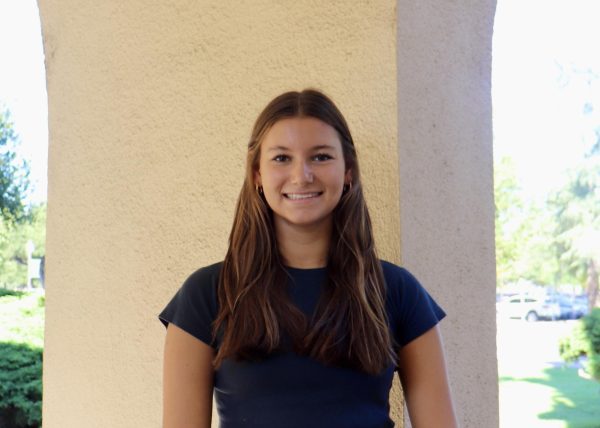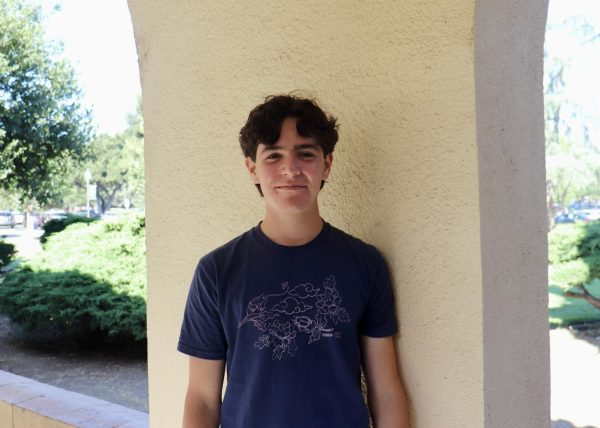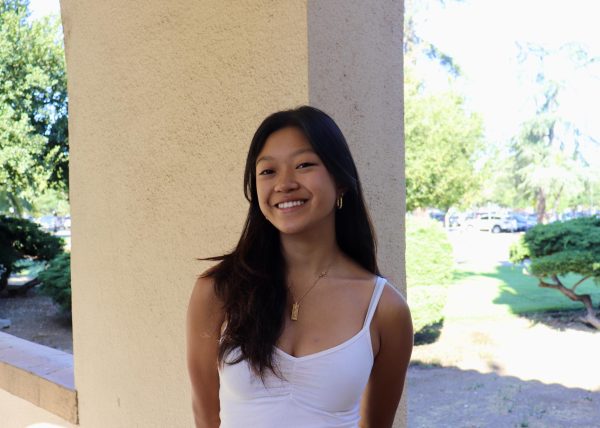When facing the college application process, many artistically talented students go above and beyond in their submissions, by creating a unique portfolio of their artistic passions. While some students are focused on applying to art-specific programs and schools, others simply want to enhance their application. This experience is filled with highs and lows for many artists as they figure out how to represent themselves as an artist in just a few pieces. Continue reading to understand a few unique perspectives from students currently going through this process and those who have done so in previous years.
DAVID TOMZ
Senior David Tomz began creating his first art portfolio this year, featuring ceramics and mixed media pieces, but primarily his painting and drawing projects.
“I’m creating a portfolio for college,” Tomz said. “I’m not thinking of going to art school specifically but for a lot of colleges, they let you submit a supplemental portfolio to showcase artistic skills, especially for places where [I] might want to do a minor or double major.”
Choosing from a variety of projects, Tomz considers selecting art that will form a distinctive and individualistic theme.
“I tried to pick the pieces that were a good mix of technical ability and had meaning behind them,” Tomz said.
While considering what art to include is tedious, there are other taxing efforts that go into the assembly of a portfolio.
“I think one of the most challenging aspects is writing,” Tomz said. “For a lot of places, you have to write an artist statement doing an overview of all your pieces. It’s hard to put into words.”
Although challenging, the writing process can also be enjoyable as it is a way to provide more context for your art.
“You get to be a little bit creative with writing them,” Tomz said. “With a lot of the other college essays, you don’t have room to be as creative with phrasing. These feel a bit more poetic, so it’s fun to do that.”
While the work has not been easy, Tomz hopes to continue with art as way to express himself and experiment.
“There really are no wrong answers in art, so I have the liberty to explore without the fear of failure,” Tomz said. “Even if I do fail, I can use it as an opportunity to learn and grow as an artist.”
RENNY ARGAST
Senior Renny Argast is developing her portfolio for both her AP art class and future collegiate pursuits. Argast’s art is whimsical with bright colors, made predominantly from watercolor and including other mixed mediums.
“The most challenging thing is just the sheer volume of it, finding motivation, even when you’ve already done so much on one topic,” Argast said.
Argast recognizes the opportunity a portfolio gives her to dig deep into a specific topic and reflect that concentration in her art.
“My theme for my portfolio right now is the subconscious and the different ways that it can affect our body,” Argast said. “I have two different sides of my portfolio. One side is the negative ways, like skin picking or anxiety, and then there’s the positive ways [such as] meditation, which digs into the subconscious.”
Argast was drawn to this theme because of its juxtaposition and the tension it creates for viewers. Even with a solid theme, however, it is not easy to decide which pieces to include.
“Deciding what you want to show in your artwork is a difficult process because it not only represents me but also represents my skill sets and what I want to do,” Argast said.
Not only does Argast consider her own opinion, but also the point of view of the audience.
“I feel like putting all that weight onto a piece of art can be overwhelming, especially for college applications, where there are deadlines and very specific things that these schools are looking for,” Argast said. “That can very often lead to burnout, which I think that a lot of artists applying to art schools can struggle with.”
AUDREY GUO
Audrey Guo, Paly graduate, currently attends New York University Tisch studying interactive media arts. Guo reflects on the methods she used when creating and choosing art for her portfolio.
“Of course, you need to show that you can draw and paint but I think if you truly try to make pieces that say something you want to say as an artist, push a certain idea or whatever you want to express I think that’s what ultimately, not just colleges, but people want to see,” Guo said.
Guo manifests her preference for choosing meaningful pieces over technical ones with an example titled “Anxiety.”
“I kind of had this sudden urge to draw this image of a girl like facing the camera … basically the creative urge to put this image I had in my head on paper,” Guo said. “If you actually look at the piece, it was pretty simple…The style is very cartoonish and I don’t think it was the most technically advanced thing I could have made.”
Guo felt the most rewarding part of putting together a portfolio was learning about herself.
“I figured out a lot of my artwork comes from a need to express my emotions, which I only picked up on by looking at what I was making and analyzing it because I had to write descriptions for each piece,” Guo said
However, a challenge Guo faced was having to make art that appealed to other people.
“[You keep saying] in the back of your head, ‘Are they going to like this or not?’ Guo said. “Anything you can do to reduce that, to not try to make work for other people, is what you should try to do.”
Although creating a portfolio can seem daunting, Guo gained personal insight and overcame outside judgment.
“I’m gonna stick to what I love and what I believe in,” Guo said. “That’s what will ultimately get you in and that’s how you should be thinking as an artist.”
KELLYN SCHEEL
Paly graduate Kellyn Scheel applied as a graphic design major at almost every school she was looking at and structured her portfolio accordingly.
“My portfolio was a development of my art through the years as it transformed to digital design,” Scheel said.
Scheel landed on the major to immerse herself in a newer medium, one different from a lot of her high school pieces. The first digital design Scheel created was her “Grateful Dead” cover for C Magazine during her freshman year.
“It helped me realize that I wanted to be a part of a magazine and I wanted to get into more graphic design,” Scheel said. “I had so much fun with the project and it helped me realize so much about who I was as an artist.”
While Scheel enjoys certain pieces, like the C Mag cover, she struggled to feel satisfied of her finished product.
“It’s really difficult to look at your portfolio with confidence and say that I want everybody else to see this because you’ve been looking at your own works for so long, that it almost feels like you’re desensitized to what you’re capable of,” Scheel said.
To help herself deal with the issue of feeling incapable, Scheel zoomed out and found a new perspective.
“There were moments where I wish that I had had a piece that showcased this or I wish that I had had this or that,” Scheel said. “It’s really hard to take a step back and just be able to look at everything you’ve done with pride and assemble it all together and just actually hit the submit button.”
Although not every step in developing her portfolio was easy, Scheel is proud of the hard work and dedication she put in.
“It’s just being able to take everything you’ve worked on or everything you’ve worked for and put it all in one spot and look at it and be like wow, I did that,” Scheel said.



